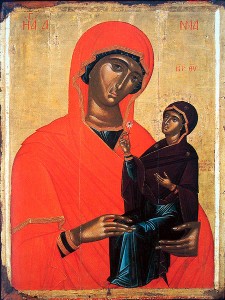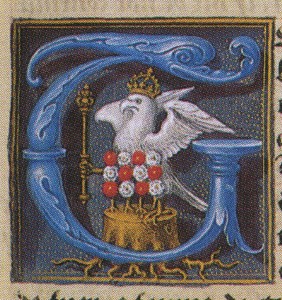 Today is the Feast of the Immaculate Conception in the Catholic Church, which dates back to the 7th century when Eastern churches began celebrating the conception of the Blessed Virgin Mary. That is the origin of the feast, but the feast day as we know it today in the West dates back to around the 11th century.
Today is the Feast of the Immaculate Conception in the Catholic Church, which dates back to the 7th century when Eastern churches began celebrating the conception of the Blessed Virgin Mary. That is the origin of the feast, but the feast day as we know it today in the West dates back to around the 11th century.
The “immaculate conception” does not refer to the conception of Christ by the Holy Spirit but, instead, refers to Mary’s own immaculate conception in the womb of her mother, St Anne, which meant that Mary had been conceived free from the taint of original sin.
On the 8th December 1854, Pope Pius IX wrote in “Ineffabilis Deus”, the Apostolic Constitution:-
“We declare, pronounce, and define that the doctrine which holds that the most Blessed Virgin Mary, in the first instance of her conception, by a singular grace and privilege granted by Almighty God, in view of the merits of Jesus Christ, the Savior of the human race, was preserved free from all stain of original sin, is a doctrine revealed by God and therefore to be believed firmly and constantly by all the faithful.”
Apologies if I have explained that rather badly!
Anne Boleyn and St Anne
In his book, “The Life and Death of Anne Boleyn”, Eric Ives explains how John Leland and Nicholas Udall’s tableau at Leadenhall in Gracechurch Street for Anne Boleyn’s coronation procession took St Anne as its theme. There, on a hill below a tree stump, sat St Anne and her descendants – her daughters, the Blessed Virgin, Mary Salome and Mary Cleopas; and their families. The message of this tableau was that the pregnant Anne Boleyn was England’s hope for an heir and that she “would go on to rival the maternal success of her patron saint” and namesake. At this tableau, Anne was addressed by a boy speaking verses written by Nicholas Udall:-

“For like as from this devout Saint Anne
Issued this holy generation,
First Christ, to redeem the soul of man;
Then James th’apostle, and th’evangelist John;
With these others, which in such fashion
By teaching and good life, our faith confirmed,
That from that time yet to, it hath not failed…”
As Ives points out, it was all rather ironic seeing as St Anne only produced daughters!
As the boy finished speaking, out of the tree stump flowed red and white roses and then, out of a cloud painted on the roof of the tableau, swooped Anne Boleyn’s white falcon. The falcon landed on the stump and flowers and was then crowned by an angel with an imperial crown. It was Anne Boleyn’s falcon badge brought to life, explaining that Anne would revive the dead, barren Tudor line with children that came from both the York and Lancastrian lines.
Nasim Tadghighi, in her wonderful article 31 May 1533 – Anne Boleyn’s Coronation Procession, explains also that “The name Anne was equated with ‘grace’ promoting the idea that through Anne’s marriage to the monarch and the bearing of issue, the realm would receive God’s favour, as St Anne was favoured by being the mother of the Holy Virgin.”
So, there’s the link between Anne Boleyn and St Anne!
As the theme of today is conception, you may also be interested in reading my article The Pregnancies of Anne Boleyn and Catherine of Aragon, which were obviously far from immaculate!
Notes and Sources
- The Life and Death of Anne Boleyn, Eric Ives, p219-221
- 31 May 1533 – Anne Boleyn’s Coronation Procession by Nasim Tadghighi
- What is the Immaculate Conception?, Scott P. Richert
- Immaculate Conception, Scott P. Richert